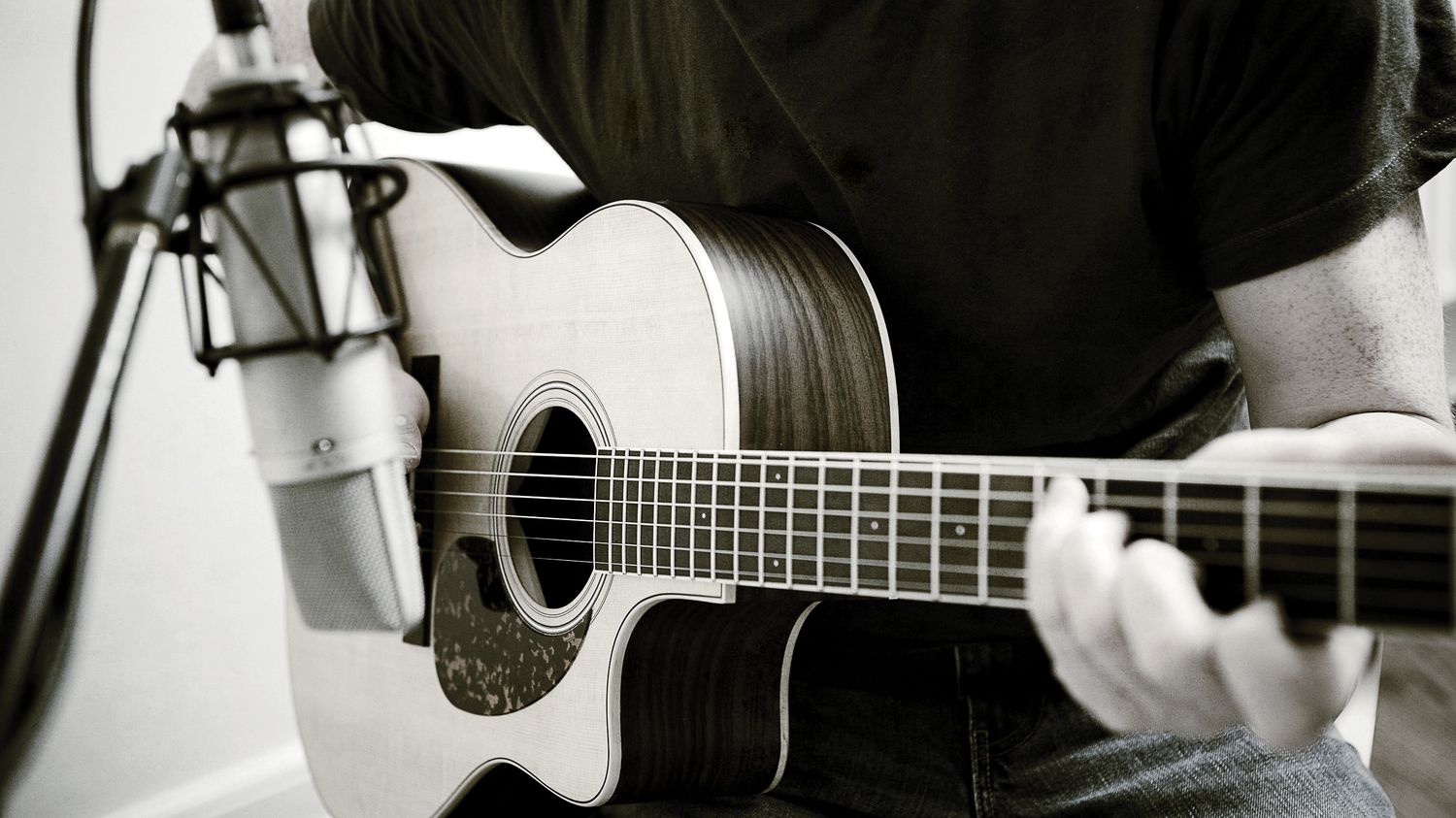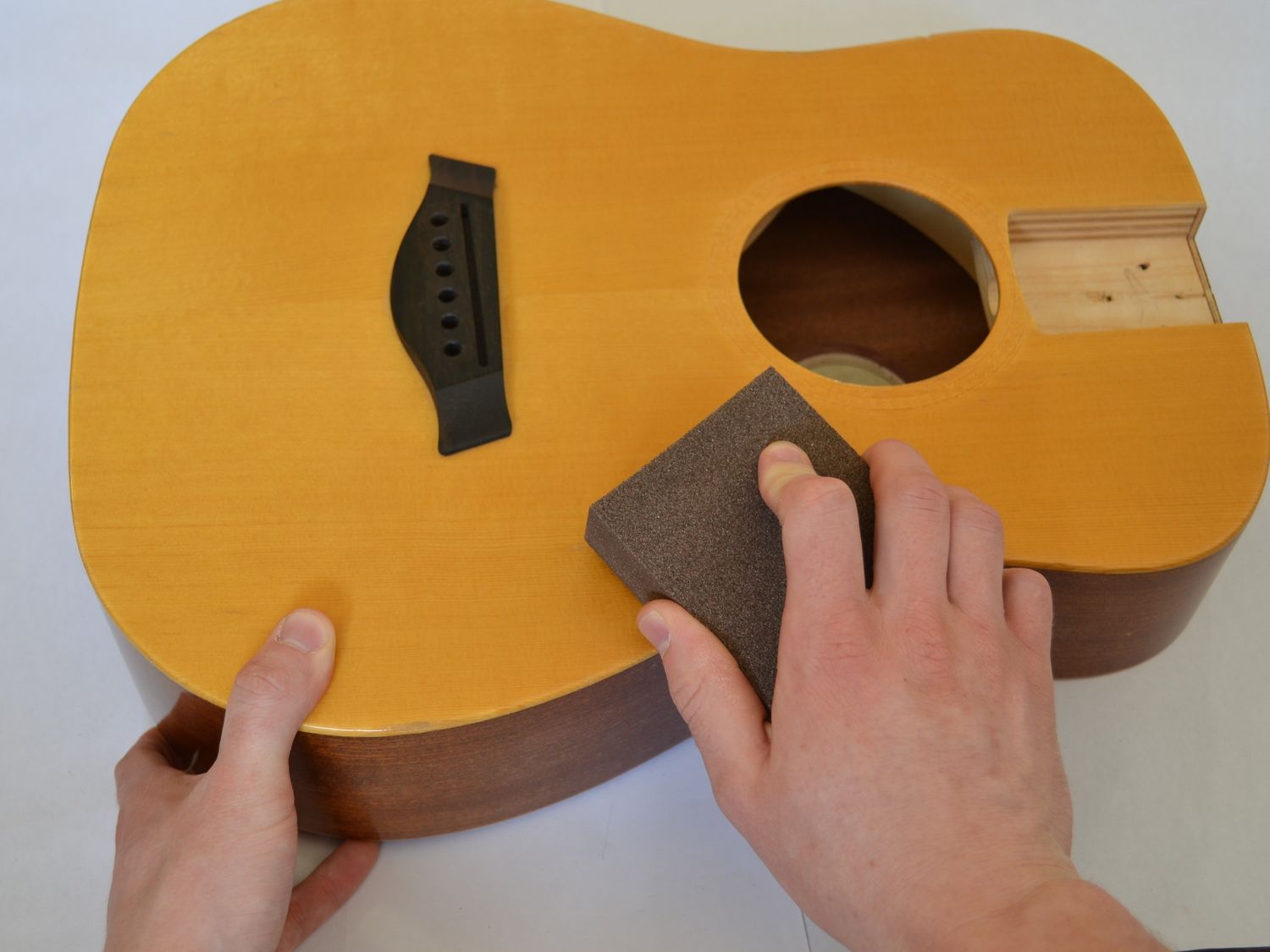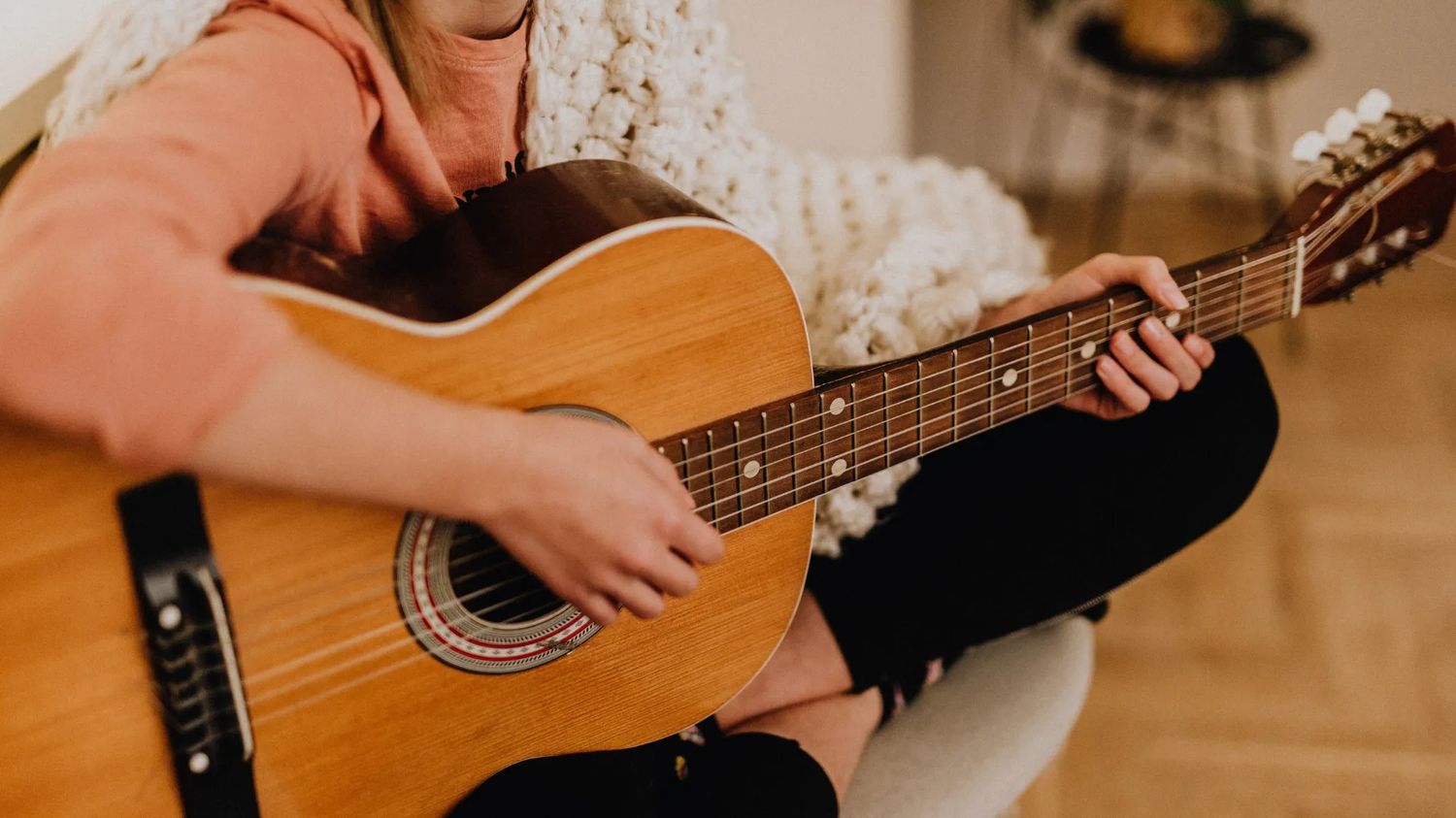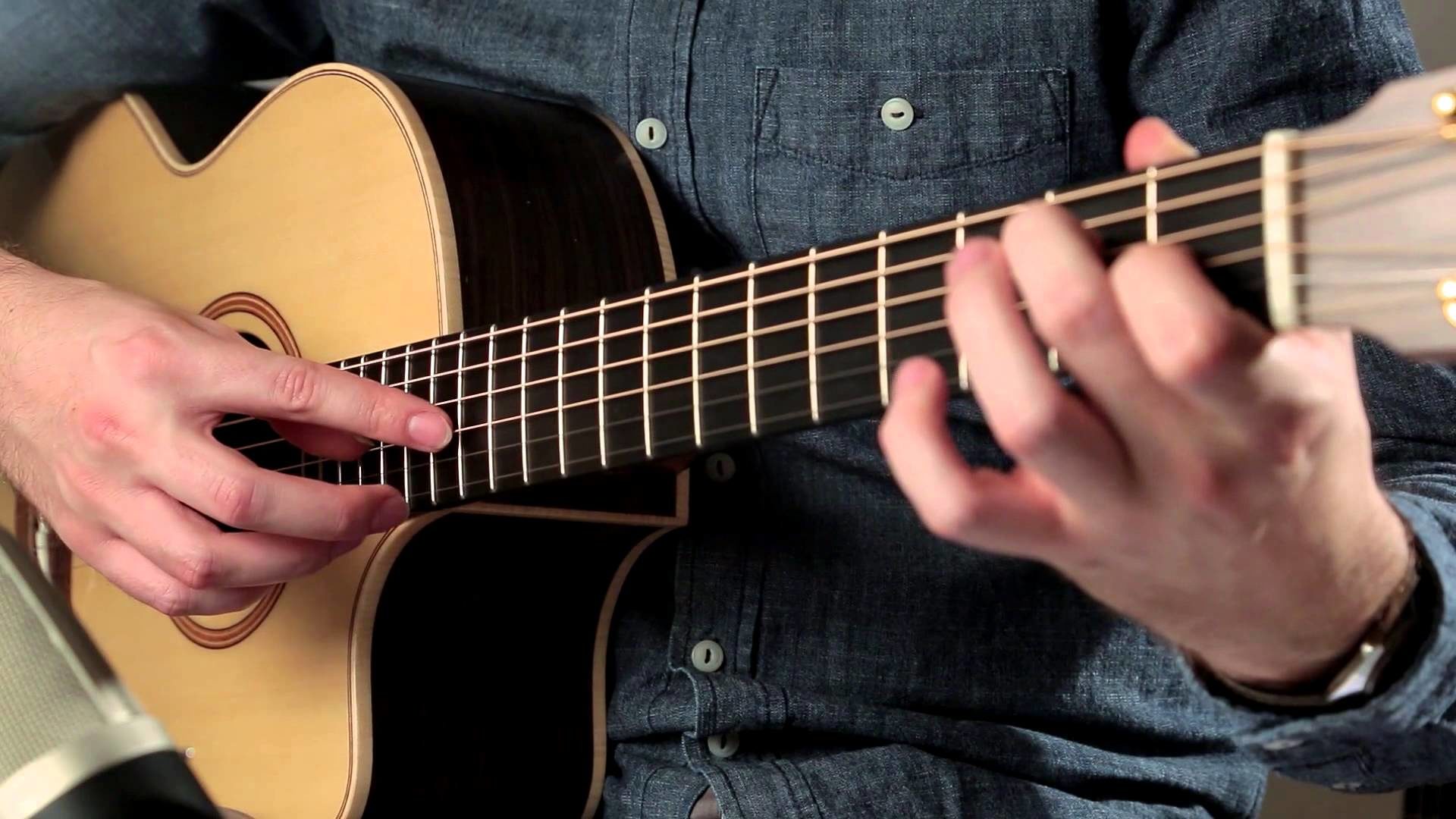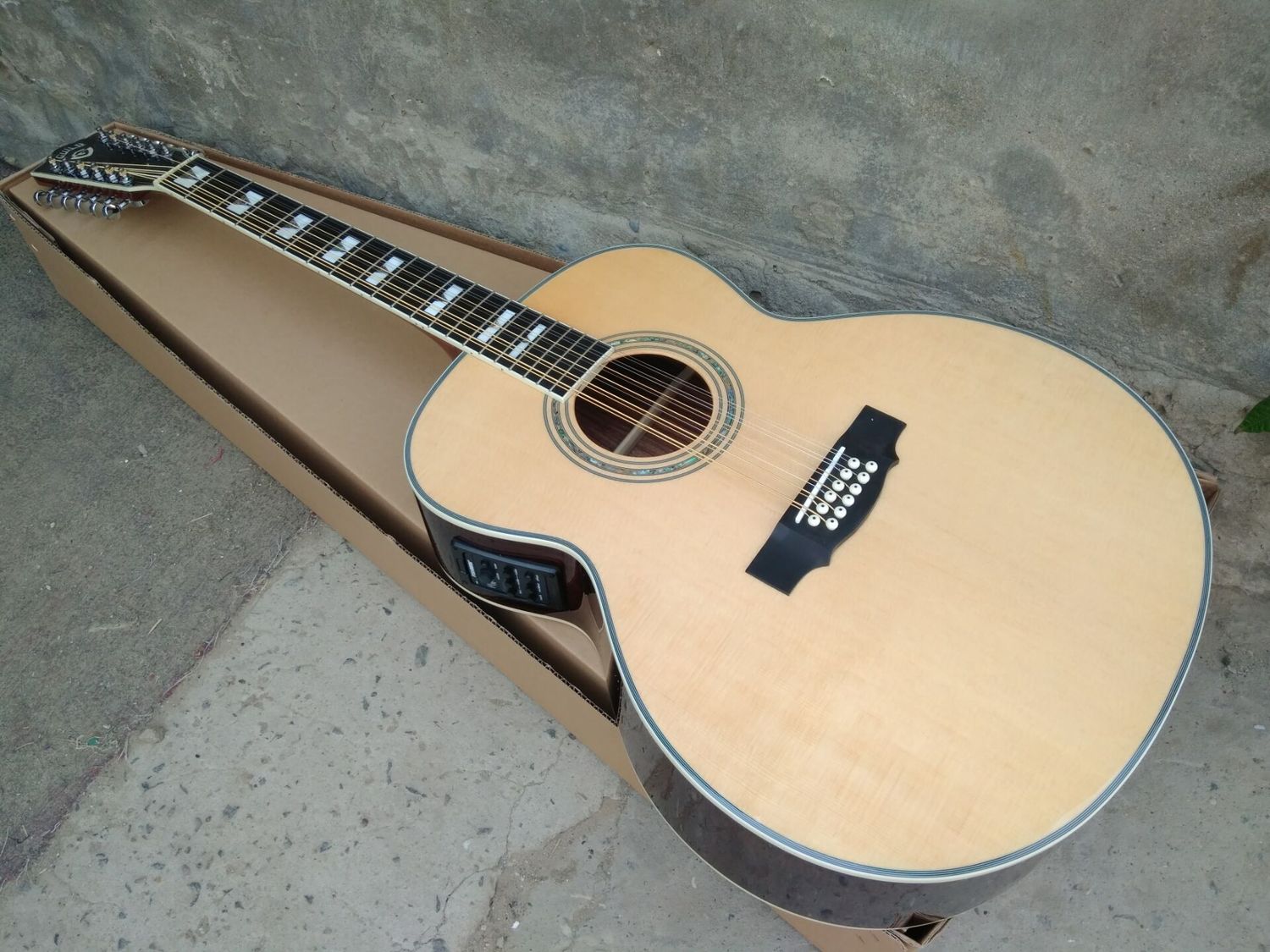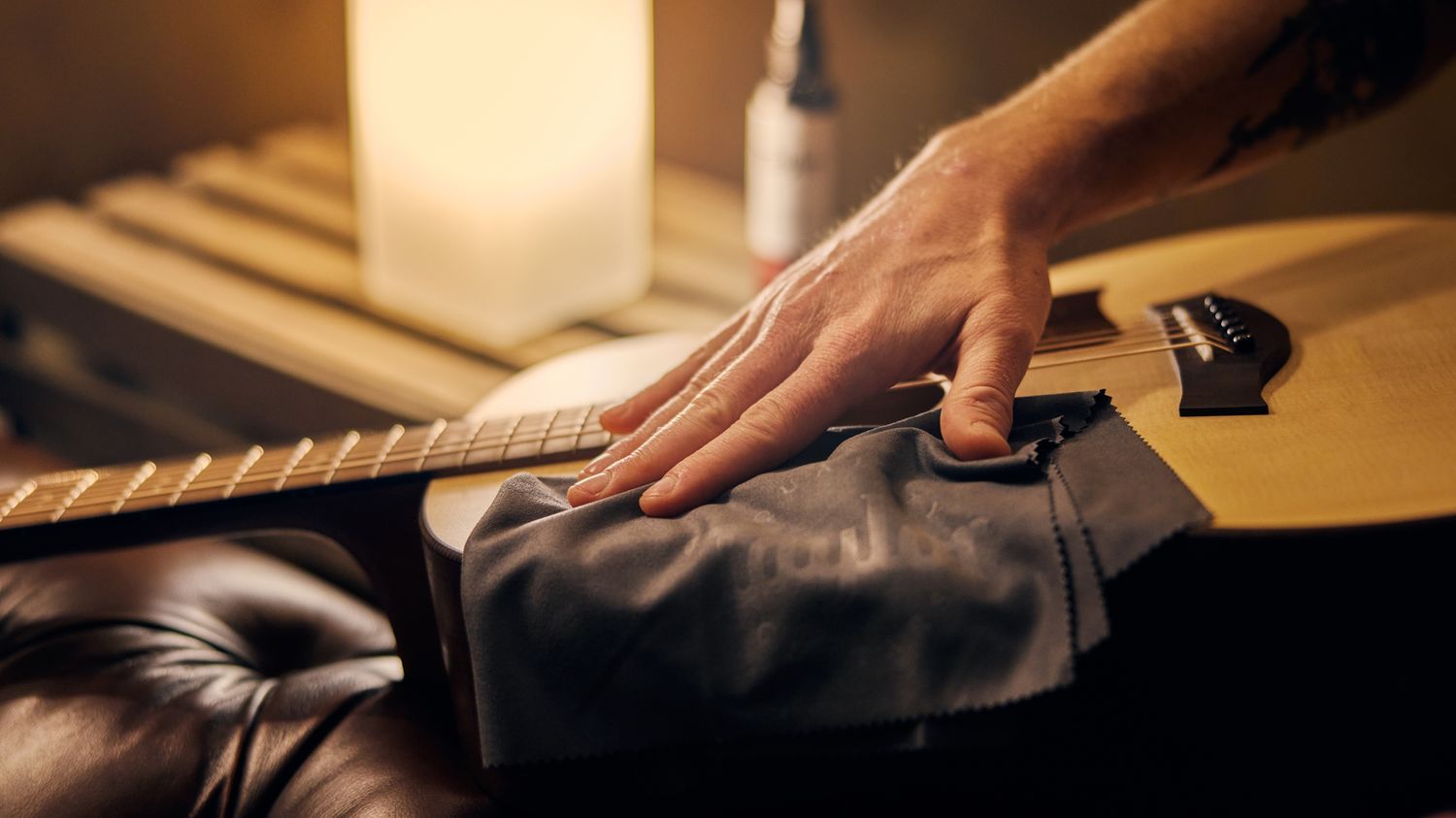Home>Production & Technology>Acoustic>How To Stop Feedback On Acoustic Guitar
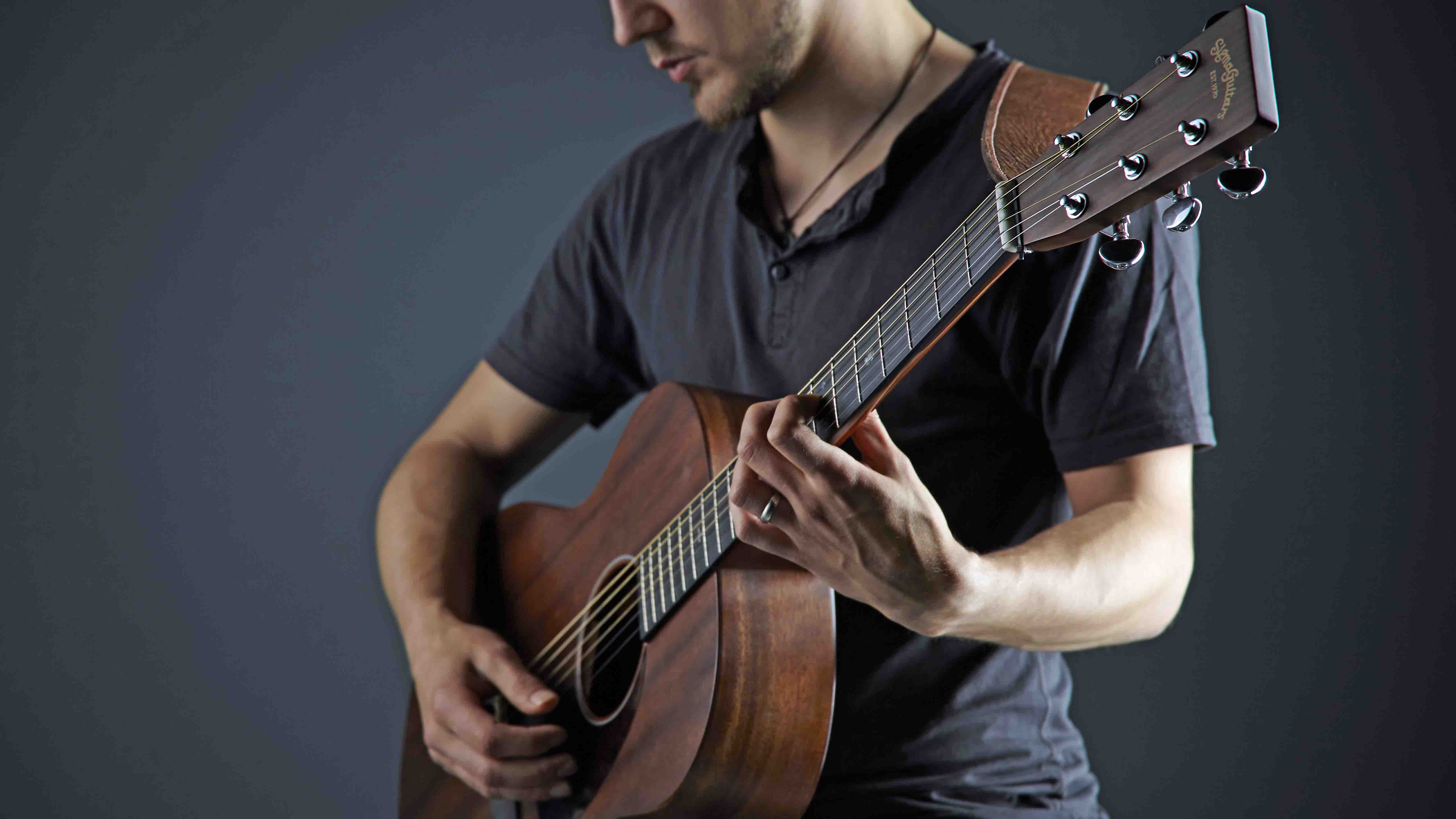

Acoustic
How To Stop Feedback On Acoustic Guitar
Published: March 11, 2024
Learn effective techniques to stop feedback on your acoustic guitar. Discover tips and tricks to eliminate unwanted noise and improve your sound quality.
(Many of the links in this article redirect to a specific reviewed product. Your purchase of these products through affiliate links helps to generate commission for AudioLover.com, at no extra cost. Learn more)
Table of Contents
Introduction
Acoustic guitars are beloved for their warm, natural tones and versatile playability. Whether you're strumming at a campfire or performing on stage, the rich sound of an acoustic guitar can captivate audiences and elevate musical experiences. However, every guitarist has encountered the frustrating phenomenon of feedback at some point. It's that unwelcome screeching or howling sound that occurs when the guitar's amplified sound is picked up by the guitar's own pickups or microphone, creating a loop of sound that can be disruptive and unpleasant.
Feedback can be a significant challenge for acoustic guitarists, especially in live performance settings where amplification is necessary to reach a larger audience. The good news is that there are effective strategies and tools to minimize and even eliminate feedback, allowing you to fully enjoy the pure, natural sound of your acoustic guitar without unwanted noise interference.
In this article, we'll delve into the intricacies of feedback on acoustic guitars and explore various techniques and equipment that can help you mitigate this issue. Whether you're a seasoned performer or a passionate beginner, understanding how to prevent feedback will empower you to make the most of your acoustic guitar's sonic potential. So, let's embark on this journey to unlock the secrets of taming feedback and unleashing the true beauty of acoustic guitar music.
Understanding Feedback on Acoustic Guitar
Feedback on acoustic guitars occurs when the amplified sound from the guitar's pickups or microphone is re-amplified through the speaker, creating a loop of sound that can result in a high-pitched, sustained noise. This phenomenon is primarily caused by the interaction between the guitar's sound and the amplification system, often exacerbated by the environment in which the guitar is being played.
The key contributing factors to feedback include the proximity of the guitar to the amplifier or monitor speakers, the volume and gain levels, and the acoustic properties of the performance space. When the amplified sound from the guitar is picked up by the pickups or microphone and re-amplified through the speakers, it can lead to a continuous loop of sound, resulting in the characteristic feedback noise.
The acoustic properties of the performance space play a crucial role in feedback occurrence. Spaces with hard, reflective surfaces can cause sound waves to bounce and amplify, increasing the likelihood of feedback. Additionally, the positioning of the amplifier or monitor speakers in relation to the guitar can significantly impact the potential for feedback. When the guitar is too close to the speakers, the sound picked up by the pickups or microphone is more likely to be re-amplified, triggering feedback.
Understanding the mechanics of feedback on acoustic guitars is essential for effectively addressing and minimizing this issue. By comprehending the interplay between the guitar, amplification system, and performance environment, guitarists can implement targeted strategies to mitigate feedback and ensure a pristine acoustic sound.
In the following sections, we will explore various techniques and equipment that can be employed to minimize feedback, empowering guitarists to harness the full potential of their acoustic instruments without the disruptive interference of unwanted noise.
Techniques to Minimize Feedback
-
Strategic Positioning: One of the fundamental techniques to minimize feedback on an acoustic guitar is strategic positioning. By maintaining a sufficient distance between the guitar and the amplifier or monitor speakers, you can reduce the likelihood of sound from the guitar being re-amplified and causing feedback. Experiment with different placements to find the optimal positioning that minimizes the risk of feedback while ensuring an optimal sound projection.
-
EQ Adjustment: Utilizing the equalization (EQ) controls on the amplifier or sound system can significantly impact feedback. By carefully adjusting the EQ settings, particularly the frequencies prone to feedback, such as the midrange, you can attenuate the potential for unwanted noise. Taming the frequencies that are susceptible to feedback can help maintain a balanced and clear acoustic sound while minimizing disruptive feedback.
-
Feedback Busters: Employing feedback busters or soundhole covers designed specifically for acoustic guitars can effectively mitigate feedback. These accessories are placed in the soundhole of the guitar and work to dampen the sound waves that contribute to feedback, allowing for a more controlled and feedback-resistant acoustic performance. Additionally, foam or rubber feedback busters can be strategically positioned inside the guitar to absorb and reduce internal vibrations that may lead to feedback.
-
Use of Microphone Polar Patterns: When using a microphone to amplify an acoustic guitar, understanding and utilizing microphone polar patterns can be instrumental in minimizing feedback. Selecting a microphone with a cardioid polar pattern, which is more directional and less likely to pick up sound from the monitor speakers, can help reduce the potential for feedback. Positioning the microphone carefully and adjusting its angle can further optimize its rejection of unwanted sound, contributing to a feedback-resistant setup.
-
Sound Absorption: Incorporating sound absorption materials, such as acoustic panels or curtains, in the performance space can help minimize feedback by reducing the reflection and amplification of sound waves. By strategically placing sound-absorbing materials in the vicinity of the guitar and amplification system, you can create a more acoustically controlled environment, mitigating the occurrence of feedback and promoting a clearer, more focused acoustic sound.
Implementing these techniques in combination can significantly enhance the feedback resistance of an acoustic guitar setup, allowing guitarists to confidently amplify their instruments without the disruptive interference of feedback. By leveraging strategic positioning, EQ adjustments, feedback busters, microphone polar patterns, and sound absorption, guitarists can unlock the full sonic potential of their acoustic guitars in live performance settings, ensuring a captivating and uninterrupted musical experience.
Using Feedback Suppressors
Feedback suppressors, also known as feedback eliminators or anti-feedback devices, are invaluable tools for effectively combating feedback in acoustic guitar amplification setups. These intelligent devices are designed to detect and suppress feedback frequencies in real time, allowing guitarists to maintain a pristine and feedback-free acoustic sound without compromising on volume or tonal quality.
One of the primary functions of feedback suppressors is their ability to dynamically identify and attenuate feedback frequencies without adversely affecting the overall sound of the guitar. By continuously monitoring the audio signal and detecting frequencies that are on the verge of feedback, these devices apply precise notch filters to suppress the problematic frequencies, effectively preventing feedback from occurring without perceptibly altering the guitar's natural tone.
Feedback suppressors offer a seamless and automated approach to feedback management, making them particularly advantageous in live performance scenarios where real-time adjustments are crucial. These devices can be integrated into the signal chain between the acoustic guitar and the amplifier or sound system, providing a proactive defense against feedback without requiring manual intervention from the guitarist.
Furthermore, feedback suppressors are equipped with advanced algorithms and adaptive processing capabilities that enable them to adapt to changing performance conditions and effectively suppress feedback across varying frequencies and sound levels. This adaptability ensures that the acoustic sound remains unaltered while providing consistent and reliable feedback suppression, empowering guitarists to deliver captivating performances with confidence and clarity.
In addition to their feedback suppression capabilities, many feedback suppressors offer intuitive controls and user-friendly interfaces, allowing guitarists to customize settings and optimize performance-specific parameters. This level of control enables fine-tuning of the feedback suppression process, ensuring that the device effectively addresses feedback while preserving the nuances and dynamics of the acoustic guitar's sound.
The utilization of feedback suppressors represents a proactive and sophisticated approach to managing feedback in acoustic guitar amplification, offering a reliable and unobtrusive solution to a common challenge. By leveraging the advanced technology and adaptive functionality of feedback suppressors, guitarists can elevate their live performances, confidently projecting the natural beauty of their acoustic guitars without the disruptive interference of feedback.
Incorporating a feedback suppressor into an acoustic guitar amplification setup empowers guitarists to focus on their musical expression without the distraction of feedback, ultimately enhancing the audience's listening experience and allowing the true essence of the acoustic guitar to shine through with clarity and authenticity.
Conclusion
In the realm of acoustic guitar performance, the battle against feedback is a common challenge that has the potential to disrupt the natural beauty and purity of the instrument's sound. However, armed with a deeper understanding of the mechanics of feedback and a diverse array of techniques and tools, guitarists can effectively minimize and even eliminate feedback, allowing the true essence of the acoustic guitar to resonate with clarity and authenticity.
By strategically positioning the guitar, making precise EQ adjustments, utilizing feedback busters, and leveraging microphone polar patterns, guitarists can create a feedback-resistant setup that preserves the natural tonal characteristics of their instruments while minimizing the risk of unwanted noise interference. Additionally, the incorporation of sound absorption materials further contributes to creating an acoustically controlled environment, enhancing the overall sonic experience.
Furthermore, the utilization of feedback suppressors represents a proactive and sophisticated approach to managing feedback in acoustic guitar amplification setups. These intelligent devices offer real-time feedback detection and suppression, ensuring a seamless and uninterrupted acoustic sound without compromising on volume or tonal quality. The adaptive processing capabilities of feedback suppressors empower guitarists to deliver captivating performances with confidence and clarity, free from the disruptive influence of feedback.
As guitarists navigate the intricacies of live performance settings and amplification systems, the knowledge and implementation of these techniques and tools serve as invaluable allies in the pursuit of pristine acoustic sound. Whether performing in intimate acoustic settings or commanding larger stages, the ability to tame feedback and unleash the full sonic potential of the acoustic guitar is a testament to the dedication and artistry of the modern guitarist.
In conclusion, the journey to stop feedback on acoustic guitar is a multifaceted exploration that encompasses technical expertise, creative problem-solving, and a deep appreciation for the inherent beauty of acoustic music. By embracing the strategies and technologies available, guitarists can embark on their musical endeavors with confidence, knowing that they have the means to conquer feedback and allow the soul-stirring resonance of the acoustic guitar to captivate audiences with unwavering clarity and authenticity.


